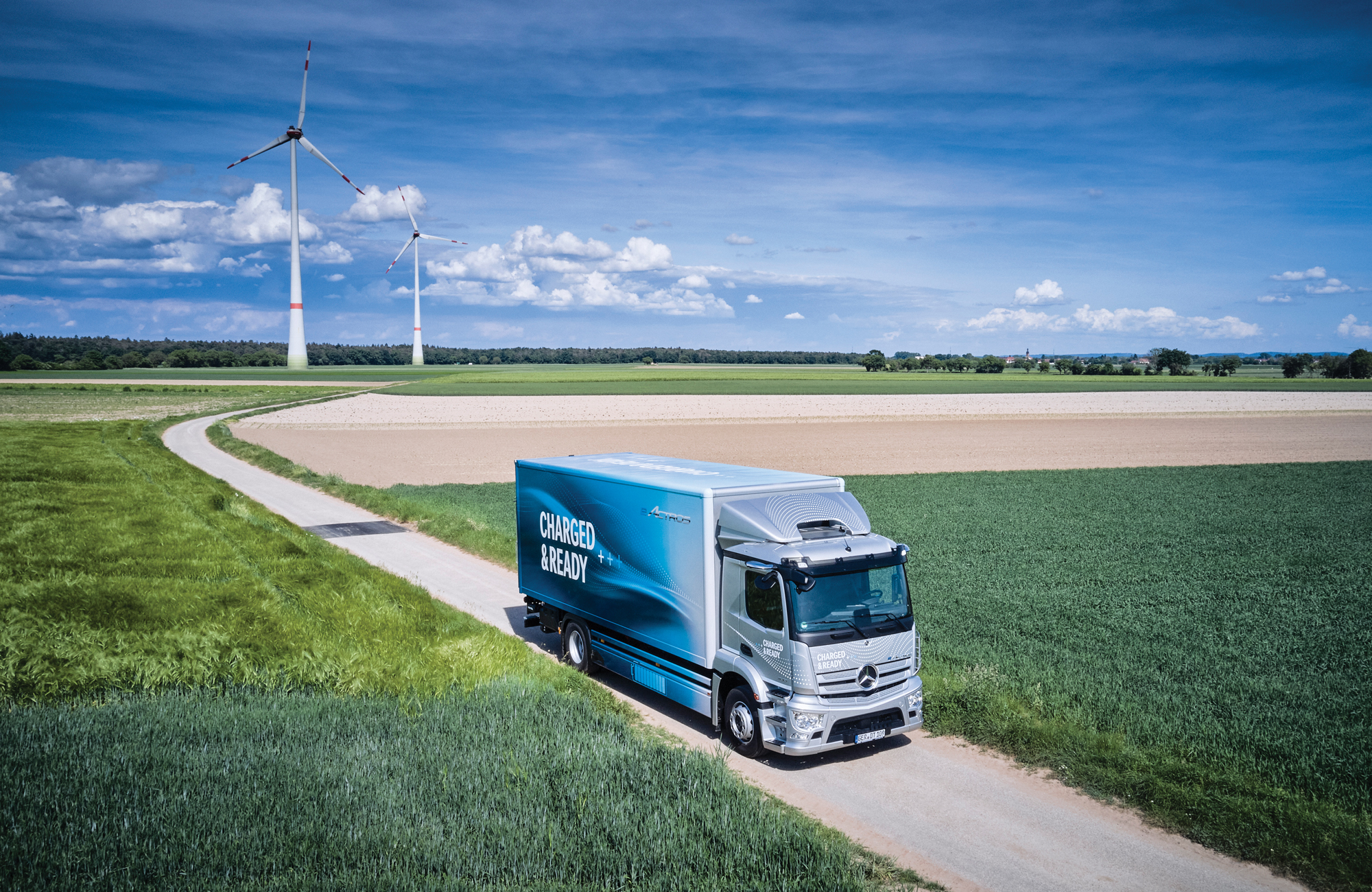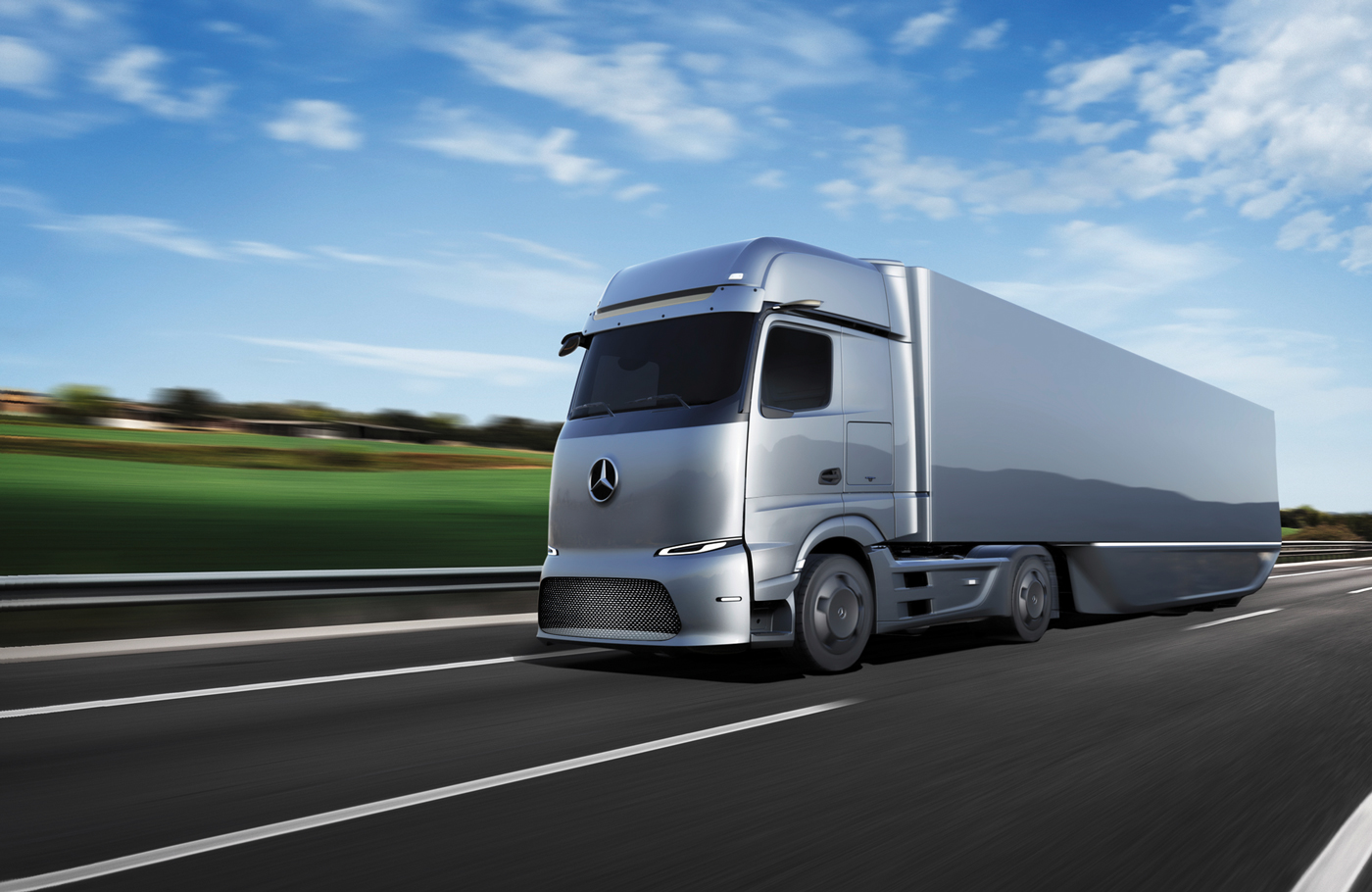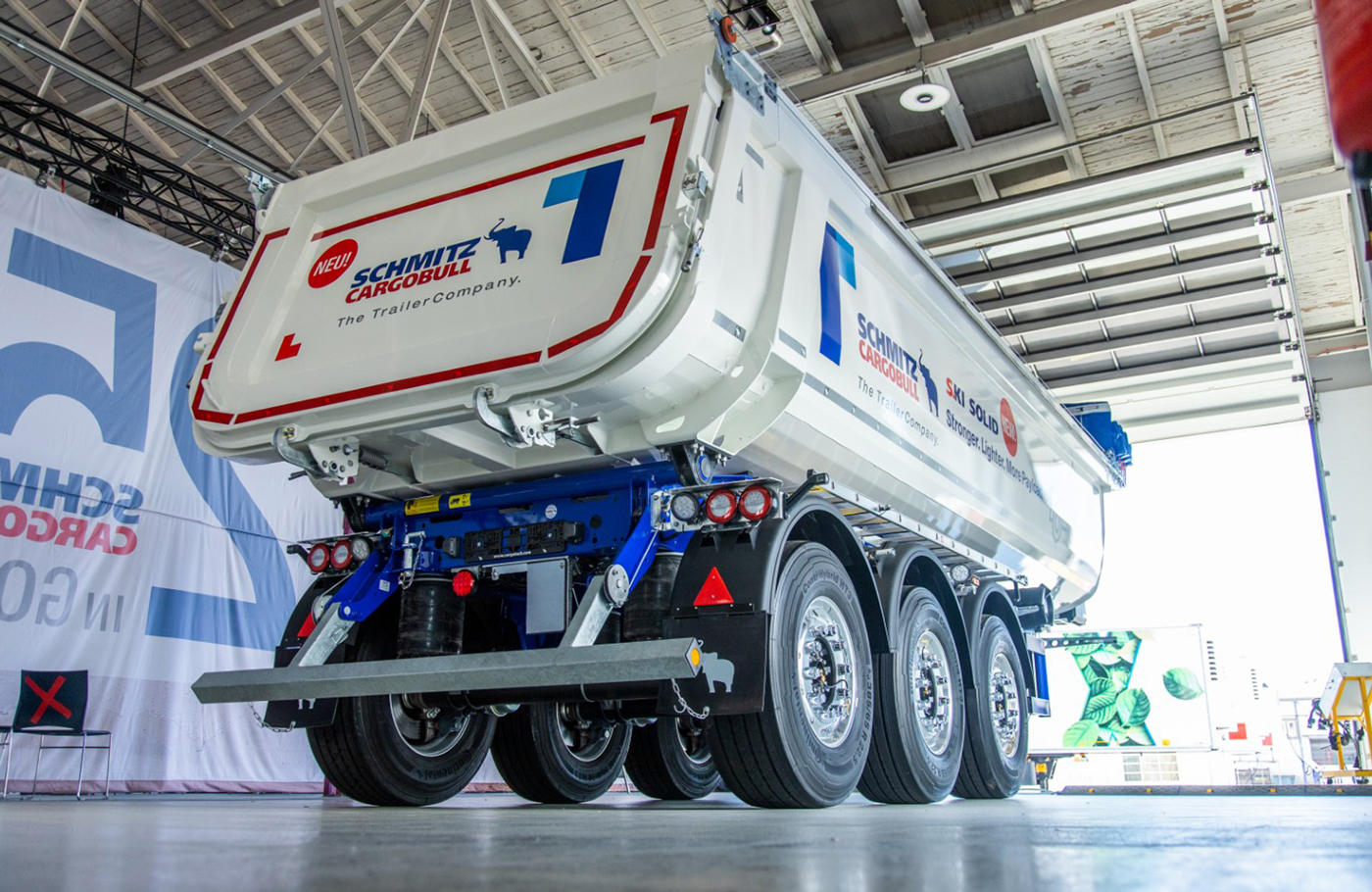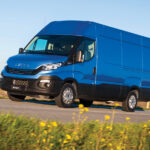IAA visitors in for a treat
IAA visitors in for a treat
The focus of the show may have changed but CHARLEEN CLARKE reports that, in typical IAA fashion, a plethora of new equipment and tech will be on show in the latest instalment of this transport exhibition.
After a four-year break, the IAA is back! It has been renamed the IAA Transportation 2022 and the focus of the event – which takes place at the Hannover exhibition centre between September 20 and 25 – is completely new. Instead of a vehicles and wheels event, the new-look fair will cover all aspects of transportation, from cargo bikes and drones through to the more conventional trucks and buses.
Tech is coming to the fore more than ever. Whether in passenger transport, technological change, charging infrastructure, last-mile transport, or the path to climate neutrality, visitors will be able to see it all at IAA Transportation. The overwhelming emphasis will be on a changed path for the industry going forward. “As a cross-sector platform, IAA Transportation is a sign of the necessary departure from silo thinking and the associated rethinking that is currently taking place among all players in the industry. It is precisely this mindshift that we need in order to make transport and logistics safe, tailored, and above all, sustainable in the future,” explains VDA managing director Jürgen Mindel. “We, as organisers of the IAA, will do our part.”
The world’s transport media recently gathered in Frankfurt for the IAA’s International Press Workshop, which gave a taste of what visitors can see at the show. As always, FOCUS was the only South African magazine represented at the event. Here is an overview of the workshop, plus other news on products and services that will be showcased at the fair.
Enginius shows hydrogen trucks
Enginius, the first vehicle manufacturer to obtain EU type approval for electric trucks with hydrogen fuel cells, is a first-time exhibitor at the IAA. The company belongs to the FAUN Group. CEO Patrick Hermanspann has high aspirations: “We want to be the European market leader for hydrogen-powered trucks on short- and medium-haul routes by 2030,” he told journalists.
The company has been producing and selling its Bluepower refuse collection vehicles since 2019. The vehicle is based on the Mercedes-Benz Econic… but it runs on hydrogen. Depending on the equipment specified, the vehicles have a range of up to 250 km with a payload of 17 metric tonnes. Filling the 16 kg hydrogen tanks at 700 bar takes less than 15 minutes.
At the IAA, the company will also present the all-new Citypower – a truck for goods and freight transport, based on the Mercedes-Benz Atego. With a payload of nine tonnes, a range of 500 km, and a refuelling time of 30 minutes, the Citypower is an emission-free, low-noise replacement for diesel vehicles.
There are already over 150 hydrogen refuelling stations in the EU, with 95 in Germany alone, and Enginius plans to deliver 12 000 vehicles to customers by 2023.
Neste promotes renewable diesel at IAA
Neste Germany will be promoting renewable diesel at the IAA. “We fully believe in electric, but we think renewable fuels are an essential option too,” Peter Zonneveld, VP Renewable Road Transport Europe, explained.
Neste Renewable Diesel is produced by 92% waste and residue and is already being provided to 4 000 B2B customers. “Our renewable diesel can be used in any diesel engine. It looks like water and, like water, it doesn’t smell,” he told journalists at the workshop.



Zero-mobility solutions from Quantron
Quantron CEO Michael Perschke stressed that his company’s stand will be all about zero-emission mobility. In this vein, the company is presenting two new vehicles from the heavy-duty sector: a hydrogen-powered fuel-cell electric vehicle (FCEV) truck for long-distance transport and the all-electric Quantron QHM battery-electric vehicle (BEV) 50-392.
The all-electric Quantron QHM BEV 50-392 is based on the MAN TG3 (TGS & TGX) and is new to the Quantron AG portfolio. The heavy truck can already be ordered and is ideally suited for factory and distribution operations, thanks to its low-noise and emission-free drive. Available in different 4×2 and 6×2 configurations, the Quantron QHM BEV 50-392 has a range of up to 350 km with a high-voltage 392 kWh battery and can be charged with power outputs of up to 350 kW.
In a world first, Perschke released details on the FCEV truck for the first time at the workshop. The vehicle was developed as part of a strategic partnership with the world’s leading hydrogen expert, Ballard Power Systems, and features an integrated E-axle from a global Tier 1 propulsion leader.
The FCEV truck will be available from the second quarter of 2023. The unique selling points, which are best-in-class, include a range of up to 700 km, uncompromising suitability for everyday use with a cabin which provides drivers with overnight accommodation during long journeys, and the option of using ISO-standard trailers. The FCEV truck will feature a hydrogen tank capacity well exceeding 50 kg of stored H2. The company intends to enter the South African market within five years.
Daimler Truck to show eActros LongHaul
Karin Rådström, board member of Daimler Truck, was upbeat about prospects for the industry. “We are ready to start decarbonising the transport sector. It is in our own hands to make it happen now,” she stressed at the workshop. On this note, she revealed that this will be the first IAA where Daimler will show more zero-emission vehicles than conventional combustion-engined vehicles.
Highlights of the Daimler stand will include the Gen H2 truck, eActros, eEconic, and a new vehicle that, for now, remains top secret. The really big news that we can confirm is the reveal of the eActros LongHaul, which will boast a range of 500 km. “The new generation MirrorCam will also be on display. It is greatly improved. It has shorter arms. It was developed based on feedback from customers who are operating in tight areas. The resolution of the cameras has also been greatly improved, especially in bright light,” Rådström revealed.
When asked if the eActros actually makes financial sense, she said that this is certainly the case if transport operators want zero-emission transport. “But, even if we can prove from a total cost of ownership perspective that it makes sense to electrify today, some customers are wary because of a lack of infrastructure,” she conceded.
Daimler Truck, the Traton Group, and the Volvo Group are, of course, addressing this fear. They have formed a joint venture (JV) to install and operate at least 1 700 high-performance green energy charge points on or close to highways, as well as at logistics hubs across Europe. The parties are committing to invest €500 million (about R8,5 billion) in total, which is assumed to be by far the largest charging infrastructure investment in the European heavy-duty truck industry to date.
Given developments like these, Rådström was optimistic about the future of zero-emission transport. “We are learning together with our customers and, as you will see at IAA, we are taking significant steps. Together with our competitors and customers, we are ready. All the pieces of the puzzle are starting to come together,” she promised.
MAN focuses on e-mobility
Judging by the address by Alexander Vlaskamp, CEO of MAN Truck & Bus, at the International Press Workshop, we can expect the company’s stand to focus firmly on e-mobility.
Vlaskamp pointed out that the fuel cell is still not suitable for heavy commercial vehicles. “Electrical drive remains the most efficient form. We have already received orders for more than 1 000 e-buses and we have sold 1 500 of our e-vans. In 2024, we will deliver the first 200 heavy electric trucks to our customers,” he revealed.
MAN presented a near-production prototype of the new electric truck to the public for the first time earlier this year in Nuremberg. In addition to the new emission-free drives, MAN is developing comprehensive e-mobility solutions that prepare customers for vehicle use at an early stage. “We need to drive the electrification of our fleet even faster. However, we will only succeed in ramping up e-mobility if we support our customers in their transition and convince them to do so. To this end, we are creating integrated digital solutions and charging offers,” explained Vlaskamp.
There shouldn’t be any range anxiety with the e-trucks. “The majority of long-haul trucks are not driving more than 450 or 500 km a day, so we think one charge a day will be enough,” he told journalists.
RYTLE to display e-bikes
And now, from massive trucks to e-bikes… Arne Kruse, managing director of RYTLE, revealed that his company would be promoting its new MovR3 e-bike at the IAA 2022.
“Between 2020 and 2025, we are moving from 100 billion parcels worldwide to 200 billion. Over the same period, we are moving from four to eight billion in Germany. The solution will not be more vans in the traffic and more congestion on the roads. We need a different approach,” he noted.
Enter the new MovR3. “It is 30% faster than a van and 90% closer to the door. It is a very ergonomic vehicle and it has power electric support so a rider of any age or level of fitness can ride it,” Kruse explained. No driver’s license is required and the starting price is €18 000 (about R305 000).
Schmitz Cargobull reveals innovations to reduce emissions and costs
Andreas Schmitz, CEO of Schmitz Cargobull, was also at the International Press Workshop, where hepresented a number of the company’s innovations that we will see at the IAA. He stressed that the innovations are not pie-in-the-sky ideas: “These are all real solutions that work today. It is not the future. It is the present.”
Schmitz noted that railway transport is far more environmentally friendly than road. “But the reality is that rail simply cannot cope with the volumes. So, road transport will continue to be with us for a long time… We need to innovate and, if we want to win the CO2 war, we have to go to the standard trailers and make them more efficient,” he said.
IAA visitors can expect to see a number of product innovations on the company’s stand. These will focus on aerodynamics to reduce emissions and costs, cooling efficiency for temperature-controlled freight, reducing vehicle weight while maintaining robustness, and using telematics data for greater process efficiency.
Just one of these products is the S.KI SOLID, a new tipper trailer for even greater payload. The tipper trailer not only impresses with its greater payload capacity of up to 230 kg, but also scores points for its improved handling and robust, reliable product quality, thanks to the new generation of frames and bodies.
The S.KI tipper trailer’s steel chassis frames have always been characterised by an ideal balance between weight optimisation, robust durability, and tipping stability during day-to-day use. The fundamental redesign of the modular frame has enabled weight savings of 45 to 110 kg in the S.KI tipper semi-trailer, depending on the length and frame design.
The new LIGHT frame of the S.KI variants was specifically developed for payload-optimised use on roads, construction sites, and light off-road routes. This innovation is one of the lightest steel chassis frames on the market, offering both greater stability and torsional rigidity while tipping, and better economic efficiency during day-to-day use.
New Generation DAF XD to be unveiled
DAF didn’t participate in the workshop, but we’re informed that the company will launch a new truck series for distribution and vocational applications at this year’s IAA. The New Generation DAF XD is based on the platform of the International Truck of the Year 2022 – the multiple award-winning XF, XG, and XG⁺ long-haul trucks.
For best-in-class direct vision – key for urban applications – the New Generation DAF XD has a large windscreen and large side windows with ultra-low belt lines. A low cab position adds to optimal direct view, as does the optional curb view window.
Class-leading fuel efficiency and low CO2 emissions are realised through outstanding cab aerodynamics, a new PACCAR MX-11 driveline, and advanced driver assistance systems, amongst other features. The DAF Connect fleet management system provides for time-saving over-the-air software updates. The extensive availability of PTOs, body attachment modules, and connectors contribute to first-class bodybuilder friendliness.
The New Generation XD offers superior accessibility for the driver, who is welcomed in a spacious cab of up to (nearly) 10 m3. Unmatched seat and steering wheel adjustment ranges guarantee the best driver position in this segment, while the striking and highly ergonomic dashboard features crystal clear, fully digital instrument panels. Ride and handling benefit from a completely new design of the chassis front-end, cab suspension, and rear axle suspension. As a result, the all-new XD is said to be not only a dream to work and live in, but also a joy to drive.
Thermo King to introduce leading-edge innovations
Thermo King was also not part of the workshop, but we’ve learnt that the company will unveil leading-edge innovations at the IAA. These will advance clean, quiet, high-performance transport capabilities for truck, trailer, and bus, including electrification and decarbonisation.
“Thermo King delivers solutions and products that make an impact on the industry, accelerating the move towards a more sustainable future, lowering environmental impact, and contributing to decarbonisation of our cities,” said Laurent Debias, Thermo King product management and marketing leader in Europe, Middle East, and Africa.
Visitors to the company’s stands will find the latest Thermo King advancements, including:
- New leading-edge and evolutionary models in the Thermo King Advancer A-Series portfolio of trailer refrigeration systems – renowned for market-leading performance, temperature control, unrivalled system efficiency, and fleet connectivity.
- New systems designed from the ground up to seamlessly operate with electric light commercial vehicles and advance the capabilities of zero-emission, fully-electric refrigerated transport in cities.
- New designs and solutions for small and large trucks offering lower noise, higher performance, and increased operational efficiencies for inner-city and city-to-city distribution, with lower impact on communities and the environment.
- New, customised bus heat pump technology, designed to reduce costs and greenhouse gas emissions for operators and provide full comfort for passengers.
Published by
Charleen Clarke
focusmagsa






